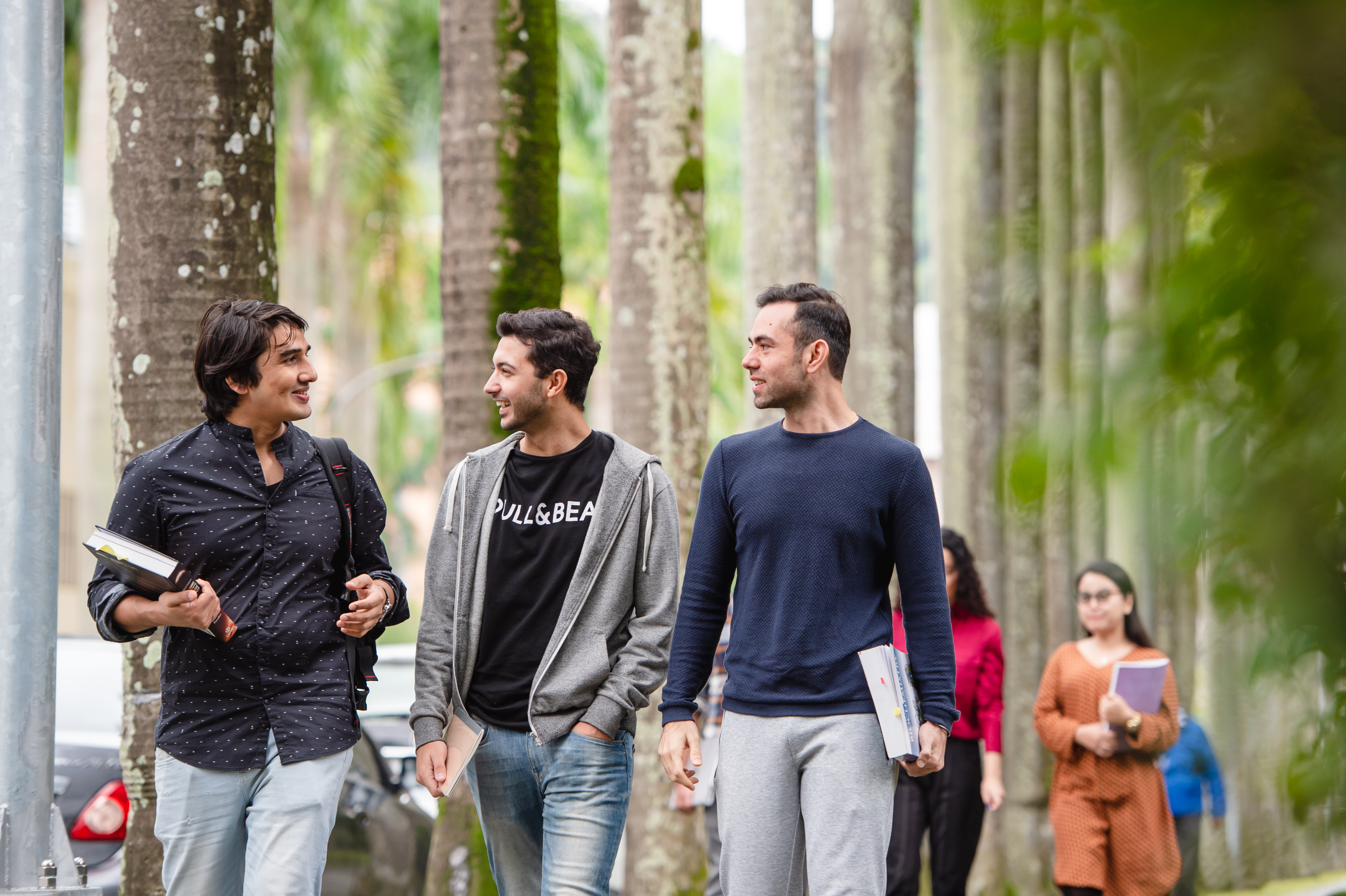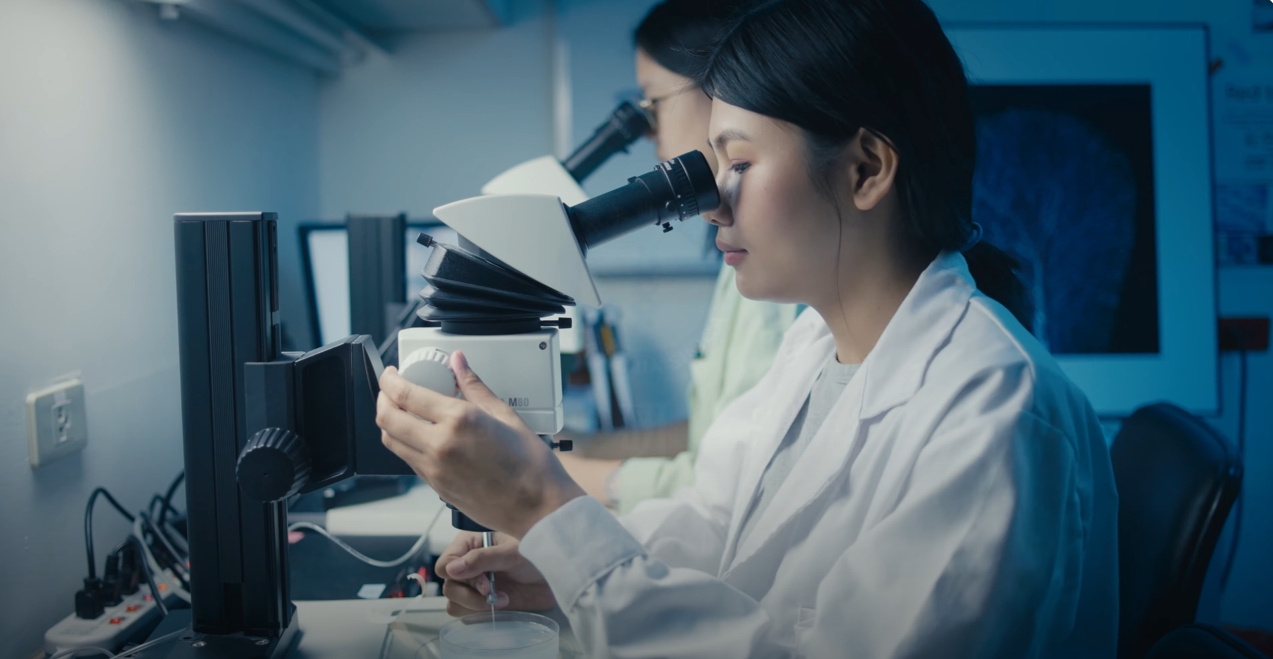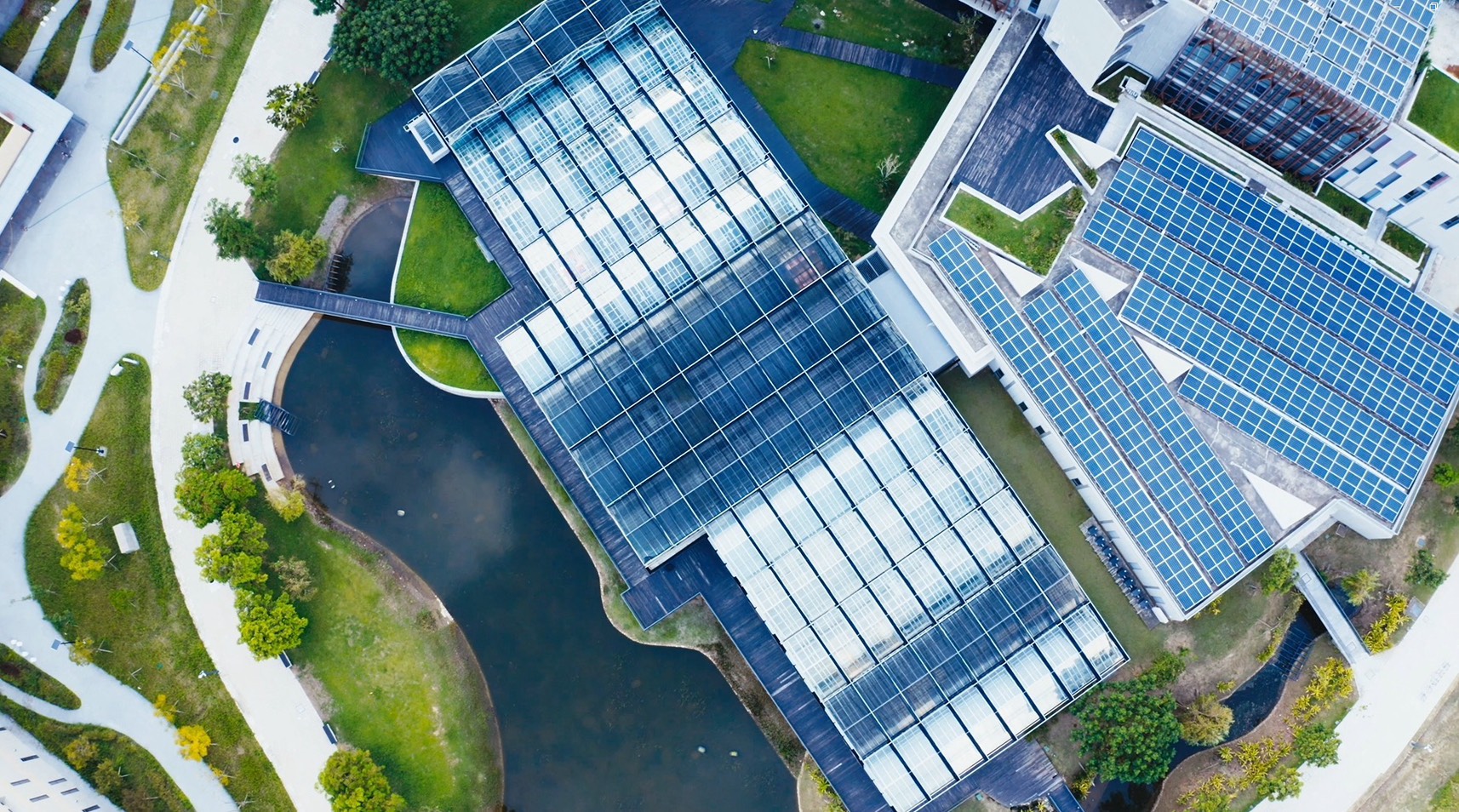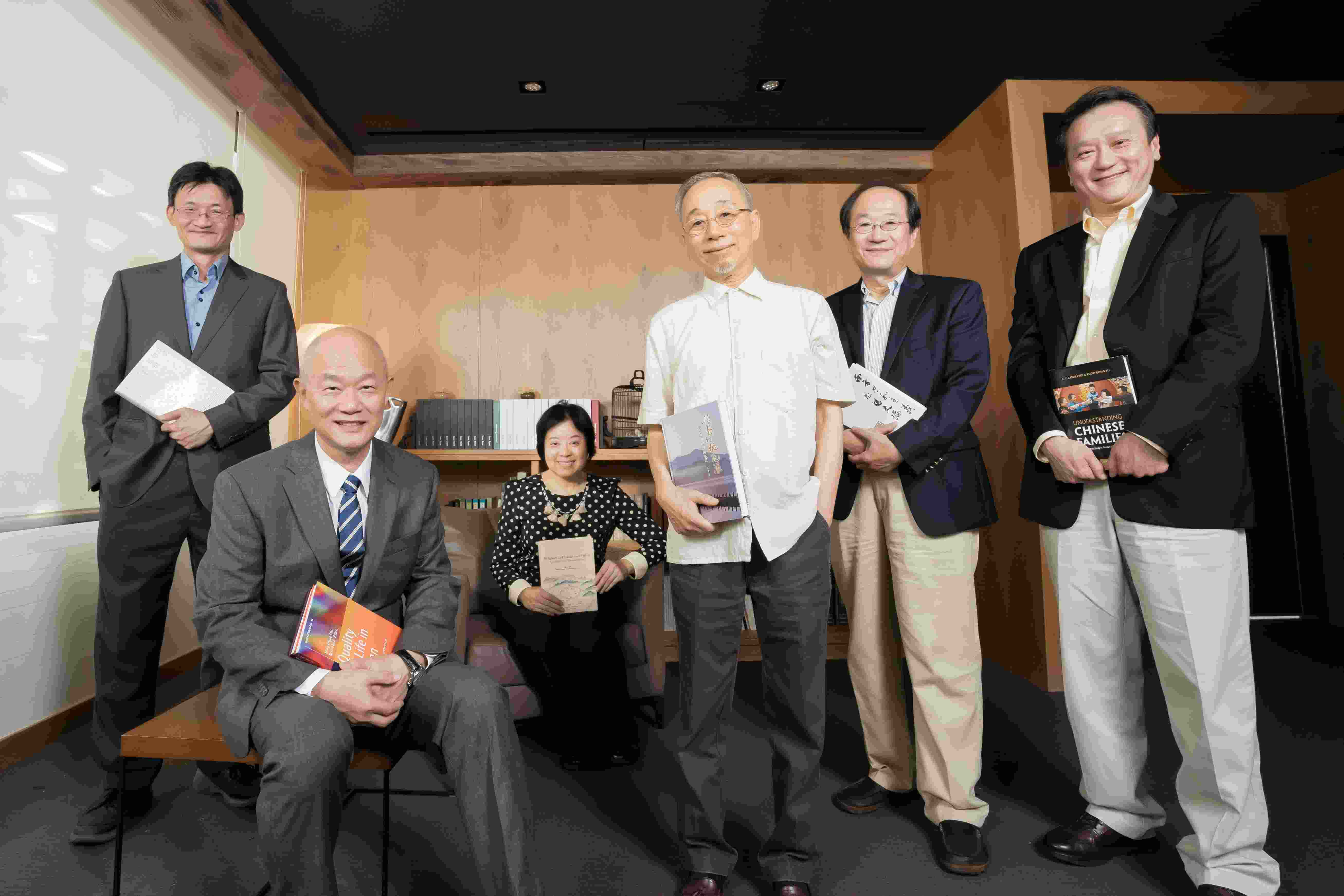Date: 2025-09-16
The carbon absorbed by plants through photosynthesis accounts for the vast majority of carbon uptake on Earth. However, the efficiency of this process still leaves much room for improvement. Enhancing carbon fixation efficiency in plants and promoting their growth is a major focus of the global scientific community. A research team led by Academia Sinica President Dr. James C. Liao, in collaboration with interdisciplinary experts from Academia Sinica’s Institute of Biological Chemistry (IBC), the Agricultural Biotechnology Research Center (ABRC), and the Institute of Plant and Microbial Biology (IPMB), has recently designed an artificial carbon fixation cycle using synthetic biology.
The team successfully engineered a novel type of “synthetic C2 plant”, the first of a kind, with a novel mechanism for carbon capture not found in nature. In so doing, the research team have achieved a 50% increase in carbon fixation efficiency, along with accelerated plant growth and significantly higher lipid production. The finding offers a new strategy to address climate change, promote sustainable energy, and enhance food security.
The research was published in the prestigious journal Science in September 2025. It marks another major achievement by Liao’s team, following their earlier breakthrough in constructing the “non-oxidative glycolysis” pathway in 2013—once again pushing the boundaries of core metabolic engineering.
First Artificial Redesign of the Photosynthesis-Surpassing Natural Evolution
At the press conference held today (September 16), Liao stated that the amount of carbon absorbed by plants through photosynthesis is 10 to 20 times greater than human carbon emissions. However, photosynthesis also releases carbon dioxide through a process known as photorespiration. In addition, CO₂ is emitted during the synthesis of lipids in plants. These two mechanisms reduce the overall efficiency of carbon fixation. Liao further noted that his interest in addressing these two major challenges began over a decade ago during his research in the United States.
To address these bottlenecks, Dr. Liao’s team designed a synthetic carbon fixation cycle, the McG cycle (Malyl-CoA glycerate cycle) to reduce the CO2 released by photorespiration and lipid synthesis. Initially tested successfully in bacteria, the cycle was then introduced into plants and shown to function with native Calvin–Benson–Bassham (CBB) cycle to create a revolutionary dual-cycle carbon fixation system. This unexpected outcome led to the development of a novel carbon fixation mechanism not found in nature through evolution.
Breakthrough in Basic Science: Enhancement in Carbon Fixation Resulting in Higher Biomass
Liao noted that, in nature, plants have evolved two main strategies to reduce carbon loss through photorespiration: C4 plants such as maize and sugarcane, and CAM plants such as cacti, pineapple, orchids, and dragon fruit. In this study, the Academia Sinica team created a third mechanism: converting C3 plants into synthetic C2 plants, and unexpectedly found that the results far exceeded expectations. These synthetic C2 plants with the cycle not only have enhanced carbon fixation and grow faster, but also produce large amounts of lipids, with overall biomass increasing by two to three times. This strategy can be further developed to provide a sustainable raw material for aviation biofuels.
However, several challenges remain, including the genetic stability of new mechanism, replacing genetic modification with precise gene-editing methods, and replicating success in major crops. “This is a fundamental breakthrough in basic science,” said Liao. “It cannot immediately solve the challenges of global carbon emissions or food security, but it demonstrates that synthetic biology offers us a promising new path forward.”
Co-author Dr. Shu-Hsing Wu, Distinguished Research Fellow at the IPMB, emphasized that the study demonstrates how synthetic biology can provide new perspectives on plant growth regulation. Another co-author, Dr. Kuo-Chen Yeh, Director of the ABRC, noted that Academia Sinica has already assembled a team of in-house experts to continue advancing research in this direction, and that the next step would be to test the system in economically important crops such as rice, tomatoes, and orchids.
The paper’s first author, Dr. Kuan-Jen Lu, now an Assistant Research Fellow in the ABRC at Academia Sinica, was responsible for carrying out nearly all the experiments and data analysis. She recalled that she had joined the research team and begun working on the project during her postdoctoral training in President Liao’s laboratory. She spent long hours modeling, designing experimental workflows, and working side by side with plants in the lab every day. “When we first saw the McG plants grow to three times their normal size, we were genuinely shocked,” she said. “Both President Liao and Director Yeh spontaneously let out a ‘Wow!’ when they saw the results. In that moment, I thought, ‘All those years of hard work were instantly worth it.’ This is the joy of doing research.” However, what followed was two more years of additional experiments, journal resubmissions, and peer review. Through this process, we gained deeper insights into the impacts of the synthetic cycle on plants. Thanks to the collective efforts of the core facility researchers at Academia Sinica, the publication was successfully completed.”
This research was a collaboration with Dr. Chia-Wei Hsu from Academia Sinica’s Metabolomics Core Facility, Research Specialist Dr.Wann-Neng Jane from the Electron Microscopy Facility, Dr. Kuo-Chen Yeh, and Dr. Shu-Hsing Wu. Funding came from Academia Sinica’s Alpha Team Project and the Innovative Translational Agricultural Research Program.
The full paper can be downloaded here: Dual-cycle CO₂ fixation enhances growth and lipid synthesis in Arabidopsis thaliana.
-
Dr. Kuan-Jen Lu, Assistant Research Fellow, Agricultural Biotechnology Research Center, Academia Sinica
(06)216-6861,klu@as.edu.tw
-
Ms. Yi-ling Lee, Media & Public Affairs, Secretariat, Academia Sinica
(02) 2787-2717,cvcc54@as.edu.tw
-
Ms. Steffi Tung Lin, Media & Public Affairs, Secretariat, Academia Sinica
(02) 2789-8820,tunglin@as.edu.tw
-
 Group photo of the research team (from left to right): Distinguished Research Fellow Shu-Hsing Wu of the Institute of Plant and Microbial Biology, President James C. Liao, Assistant Research Fellow Kuan-Chen Lu of the Agricultural Biotechnology Research Center(ABRC), and Dr. Kuo-Chen Yeh of the ABRC. Photo credit: Academia Sinica
Group photo of the research team (from left to right): Distinguished Research Fellow Shu-Hsing Wu of the Institute of Plant and Microbial Biology, President James C. Liao, Assistant Research Fellow Kuan-Chen Lu of the Agricultural Biotechnology Research Center(ABRC), and Dr. Kuo-Chen Yeh of the ABRC. Photo credit: Academia Sinica
-
 President Dr. James C. Liao (third from the left in the front row) ,Vice President Dr. Tang Tang (second from the left in the front row)and the research team .Photo credit: Academia Sinica.
President Dr. James C. Liao (third from the left in the front row) ,Vice President Dr. Tang Tang (second from the left in the front row)and the research team .Photo credit: Academia Sinica.
-
 McG plants grew 2 to 3 times more than their wild-type counterparts. Photo credit: Academia Sinica.
McG plants grew 2 to 3 times more than their wild-type counterparts. Photo credit: Academia Sinica.
-
 Dr. Kuan-Chen Lu conducted experimental research on transgenic plants. Photo credit: Academia Sinica.
Dr. Kuan-Chen Lu conducted experimental research on transgenic plants. Photo credit: Academia Sinica.
-
 Measuring carbon fixation rates of plants using portable photosynthesis system. Photo credit: Academia Sinica.
Measuring carbon fixation rates of plants using portable photosynthesis system. Photo credit: Academia Sinica.
-
 The research team designed a series of experiments to study how the dual-cycle carbon fixation system influences plant growth and metabolism. Photo credit: Academia Sinica.
The research team designed a series of experiments to study how the dual-cycle carbon fixation system influences plant growth and metabolism. Photo credit: Academia Sinica.
-
 The experiments were conducted using Arabidopsis thaliana. Photo credit: Academia Sinica.
The experiments were conducted using Arabidopsis thaliana. Photo credit: Academia Sinica.









 Home
Home
